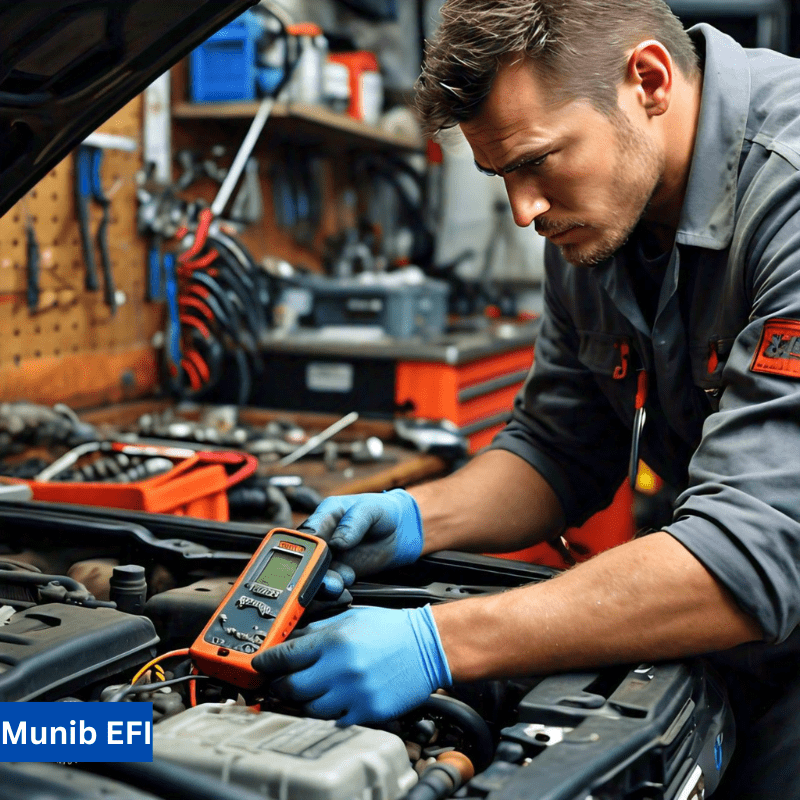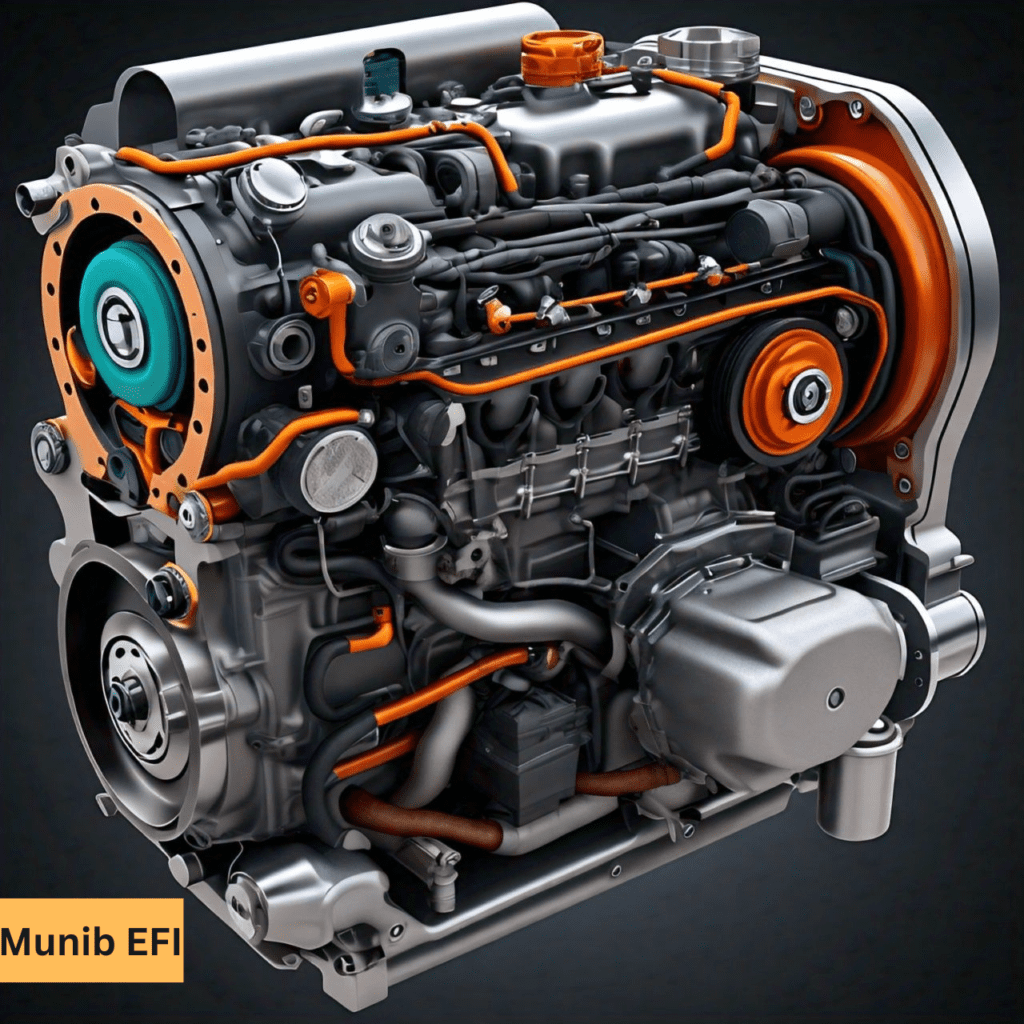Your car’s electrical system is critical, silently managing everything from starting the engine to powering your headlights and entertainment systems. The electrical problems can be challenging to diagnose and even more frustrating to fix. As a professional auto electrician with over 8 years of experience, I’ve encountered countless electrical issues in vehicles, and I’m here to provide you with a detailed, step-by-step guide to diagnosing and resolving them.
Whether you’re facing a dead battery, flickering lights, or unexplained warning indicators, this guide will help you understand your car’s electrical system, identify potential issues, and decide when to seek professional help.
Car Electrical System Overview
Before you dive into diagnosing specific issues, it’s crucial to understand the basics of how your car’s electrical system works. A solid understanding will make troubleshooting more effective.
How Car Electrical Systems Work
Your vehicle’s electrical system functions as a complex network of components that depend on each other. The battery supplies the initial power to start the engine, the alternator generates electricity while driving, and the starter motor initiates the engine’s operation. Wiring runs throughout the vehicle, delivering power to essential components like the lights, ignition system, and dashboard electronics. If any of these components fail, it can cause widespread issues.
Common Components of Car Electrical Systems
The main components include the battery, alternator, starter motor, fuses, relays, and wiring harness. Each part plays a vital role in ensuring your car runs smoothly. Problems in the electrical system can often stem from one of these components, and understanding their function will help you pinpoint issues more effectively.
Electrical System Maintenance Tips
Regular maintenance is key to avoiding electrical problems. Clean the battery terminals regularly, check for corrosion, and ensure all connections are tight. Additionally, inspect your car’s wiring for visible wear or damage. Batteries typically last 3-5 years, so if yours is nearing the end of its lifespan, it’s a good idea to get it tested or replaced.
Identifying Electrical Issues
Detecting electrical problems early can save you a lot of time and money on repairs. There are several telltale signs that your car’s electrical system may be failing.
Signs of Electrical Problems in Cars
Symptoms such as dimming headlights, slow engine crank, malfunctioning electronics, or a dashboard warning light are often the first indicators that something is wrong. If you notice any of these signs, it’s important to investigate before the problem escalates.
Warning Lights and Indicators
Most modern cars are equipped with a range of dashboard indicators designed to alert you to potential issues. A battery warning light, for example, typically signals a problem with the charging system, while other lights may point to issues with the alternator or specific electronic components. Always pay attention to these warnings—they are your first line of defense against major electrical failures.
Symptoms of Battery Issues
A weak or dead battery is one of the most common electrical problems. Symptoms include slow engine cranking, dim interior and exterior lights, and malfunctioning accessories like the radio or air conditioning. If your battery dies repeatedly or struggles to hold a charge, it might be time for a replacement.
Identifying Alternator Failures
If your battery is in good condition but still isn’t holding a charge, the alternator may be at fault. Alternator failures typically manifest as dimming headlights, electrical accessories not functioning correctly, or your battery dying even after a long drive. You can confirm alternator issues with a simple voltage test using a multimeter.

Diagnosing Electrical Failures
Once you’ve identified that an electrical issue exists, the next step is to properly diagnose the problem.
Step-by-Step Electrical Diagnosis
To begin, check the battery’s voltage using a multimeter. If it’s below 12.6 volts when the car is off, the battery may be undercharged or faulty. Next, inspect the wiring for visible damage or frayed ends. After that, proceed to test the alternator and starter motor using diagnostic tools to ensure they’re functioning properly. If all seems well, check the fuses for continuity and replace any that are blown.
Using Diagnostic Tools
Diagnostic tools are essential for troubleshooting electrical issues. A multimeter is one of the most versatile tools, allowing you to measure voltage, current, and resistance. OBD-II scanners can also be used to read fault codes from your car’s computer, providing insight into specific electronic malfunctions.
Solving Wiring and Circuits
One of the more complex aspects of diagnosing electrical problems is tracking down wiring faults. Broken or worn wiring can cause intermittent problems that are difficult to diagnose. Inspect all wiring harnesses, especially around the battery and alternator. Loose or damaged wires can cause poor connections, resulting in erratic electrical behavior.
Testing Fuses and Relays
Fuses are designed to protect electrical circuits from damage by breaking the circuit when too much current flows through. Use a multimeter to check the continuity of each fuse in the fuse box. If a fuse is blown, replace it with one of the same rating and check to see if the issue is resolved.
How to Read Wiring Diagrams
Wiring diagrams provide a visual representation of your car’s electrical system, showing how each component is interconnected. Learning to read these diagrams will help you trace circuits and identify the source of electrical problems.
Common Electrical Problems and Fixes
Now that you understand the diagnosis process, let’s dive into some of the most common electrical issues and their solutions.
Dead Battery Troubleshooting
If your car won’t start or the engine cranks slowly, the battery may be to blame. Start by checking the battery terminals for corrosion and clean them if necessary. Next, use a multimeter to check the battery’s voltage. If it’s below 12.4 volts, it may need to be recharged or replaced.
Alternator Malfunctions
If your alternator is faulty, your battery won’t charge properly. This often leads to dim lights, failing electronics, or even a completely dead battery. To confirm alternator issues, use a multimeter to test the voltage at the battery terminals while the engine is running. A reading below 13.5 volts indicates a failing alternator.
Starter Motor Problems
A clicking sound when you turn the key often points to starter motor issues. While tapping the starter motor can sometimes provide a temporary fix, a replacement is usually necessary for a long-term solution.
Faulty Wiring Diagnosis
Faulty wiring is notorious for causing intermittent electrical problems. If your headlights flicker or certain accessories stop working, trace the wires connected to those components and look for loose connections, corrosion, or damage.
Blown Fuse Solutions
If a specific component, such as power windows or lights, stops working, check the corresponding fuse. Fuses are easy to replace, but if one continues to blow, it may indicate a more significant issue such as a short circuit.
Electrical System Safety Precautions
Working on your car’s electrical system can be dangerous if proper safety measures aren’t taken.
Handling Car Batteries Safely
Always disconnect the negative terminal first to prevent accidental short circuits. Car batteries contain sulfuric acid, which can cause serious burns, so always wear protective gloves and goggles.
Avoiding Short Circuits
Ensure all wires are properly insulated and that there are no exposed wires that could make contact with metal parts. Short circuits can cause electrical fires and severe damage to your vehicle’s components.
Avoiding Electrical Shocks While Working
Never attempt to work on your car’s electrical system while the engine is running. Always disconnect the battery before working on any part of the system to avoid electrical shocks.
Advanced Electrical Diagnostics
When basic troubleshooting fails, advanced diagnostic techniques are often required to pinpoint more complex issues.
Onboard Diagnostic Systems (OBD-II)
Most modern vehicles are equipped with OBD-II ports, allowing mechanics and DIYers to read fault codes from the car’s onboard computer. These codes can provide insight into specific electrical issues, such as sensor malfunctions or communication errors between the car’s modules.
Multimeter Usage in Electrical Diagnosis
A multimeter is essential for advanced diagnostics. Use it to measure voltage drops across components, identify resistance in wires, and check for continuity in circuits.
Understanding Voltage Drops
Voltage drops occur when there’s a loss of electrical pressure in a circuit, often due to corroded connections or faulty wiring. By measuring the voltage between two points in a circuit, you can identify where the loss is happening and fix the issue.
Advanced Wiring Troubleshooting Techniques
For advanced wiring issues, tools like continuity testers and oscilloscopes can be used to detect broken circuits and irregular signals. These techniques are often used when standard diagnostics fail to locate the problem.
Professional Help for Electrical Issues
Sometimes, it’s best to leave the diagnosis and repair to a professional auto electrician.
When to See an Auto Electrician
If you’ve tried troubleshooting the issue yourself but the problem still isn’t fixed, it’s time to see a professional. Some problems, like a faulty ECM (Engine Control Module), complicated wiring issues, or problems with advanced electronics, need special tools and knowledge that only a trained expert can provide.
Finding a Qualified Auto Electrician
For the best service, Munib EFI Auto Electrician is highly recommended. With extensive experience diagnosing and repairing electrical problems in cars, you can trust them to find the issue and fix it efficiently. You can rely on their certification, skills, and the excellent reputation they have built over the years. Don’t just take our word for it – plenty of customers have shared positive reviews about their services.
What to Expect from Professional Diagnosis
When you visit Munib EFI Auto Electrician, they’ll use specialized tools to check your car’s electrical system. This includes scanning your car’s computer for fault codes, testing the charging and starting systems, and inspecting the wiring. After identifying the problem, they will explain everything to you clearly and provide an estimate for the repair costs.
FAQs
What Are the Most Common Electrical Problems in Cars?
Dead batteries, alternator issues, and blown fuses are the most common problems drivers face.
How Can I Tell If My Car Has an Electrical Problem?
Symptoms like dim headlights, malfunctioning electronics, and dashboard warning lights are clear indicators.
Can I Diagnose Electrical Problems in My Car Myself?
Basic issues like battery or fuse problems can be diagnosed at home, but more complex issues may require professional expertise.
What Tools Do I Need for Electrical Diagnostics?
A multimeter, fuse puller, and OBD-II scanner are essential tools for basic electrical diagnostics.
Is It Safe to Work on Car Electrical Systems at Home?
As long as proper safety precautions are followed, many electrical problems can be diagnosed at home. Always disconnect the battery before working on electrical components.
Conclusion
Diagnosing electrical problems in your car doesn’t have to be daunting. With the right tools and a little know-how, you can resolve many common issues yourself. Regular maintenance and timely repairs will ensure your car’s electrical system runs smoothly. However, for more complex problems, don’t hesitate to reach out to a qualified auto electrician.


